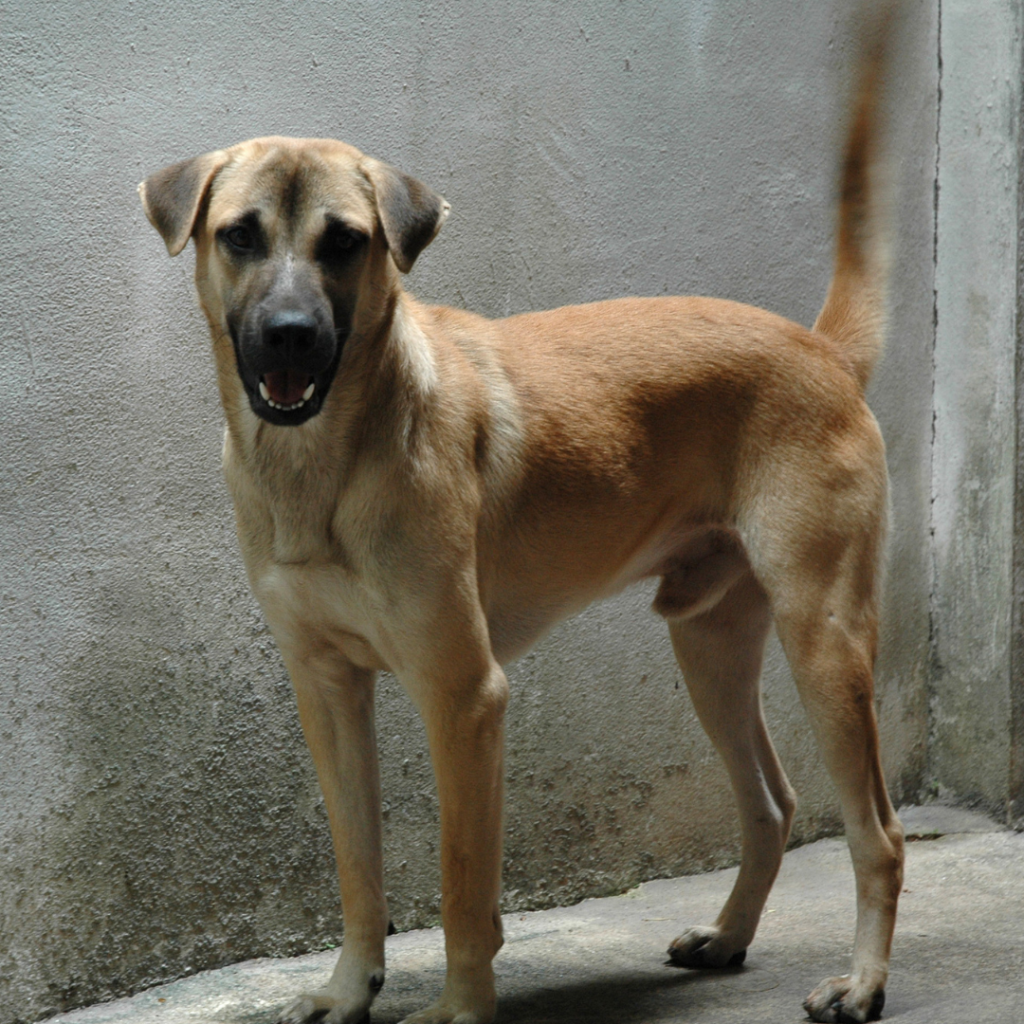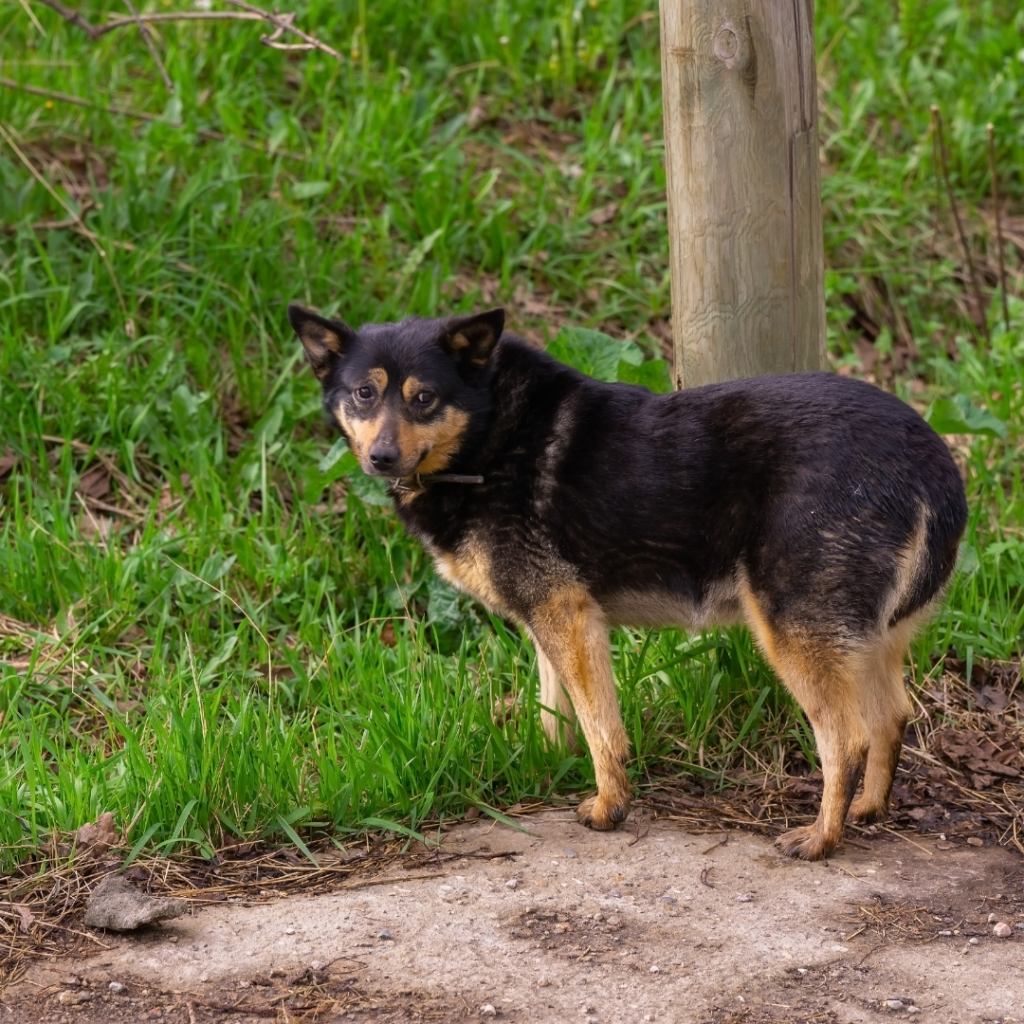October 20, 2023
Does it generally mean my dog is happy if he’s wagging his tail? The short answer to this question is no!
Tail wagging means different things in dog body language depending on the location of the dog’s tail in space.
There are three general tail positions during wagging that indicate how your dog is actually feeling. A high wagging position, a neutral position (where the tail is at the same level as the back), and a low wag.
Let’s review each example and take a look at some examples.

High wagging tail
A high wagging tail is a sign of alertness and possibly agitation.
If you are approached by a dog looking very vigilant, like the one pictured above with a high wagging tail it’s best to avoid the dog. Don’t approach on your own and don’t walk up to this dog with your dog looking to do a greeting.
This dog is feeling tense and keyed up.

Neutral wagging tail
A neutral wagging position is a good sign! This is likely a dog who is feeling happy and excited. In the picture above we can also see that the dog has a loose, relaxed face with soft eyes.
This is the hallmark of a happy dog.
This is a good time to invite your dog over to you and see if they want to interact with pets or playtime.

Low wagging tail
A low wagging tail means just the opposite of a neutral wag position. A low wag indicates that the dog is feeling stressed, nervous, and/ or worried.
(If your dog often approaches you with a low tail wag – keep reading! This post covers that very issue!)
If you see a dog with a low tail wag give them space. Don’t approach or try to pet them.
This dog is feeling nervous and is asking you for space through this body language signal.
With tail wagging and body language in general: We have to look at the whole picture
Keep in mind there is no one single dog body language signal that determines how a dog is feeling. We must look at the whole picture.
- Is the dog’s mouth tight? Or is it open and relaxed?
- Does they look hyper-vigilant?
- Are their eyes soft or are they tight?
- Are their ears pressed back or relaxed?
If we see a high wagging tail and a hyper-vigilant face with a furrowed brow, we can assume the dog is feeling quite intense and alert. It’s is not a good time to approach this dog or do an on-leash meet between two dogs.

My dog’s tail is wagging low, but he still approaches me for pets
Have you ever felt conflicted about something? You want to go out with friends but you are SO tired from the work week. Should you stay home or go out?
You’re conflicted.
Conflict occurs for dogs as well. They may want to be close to you but feel worried about body handling at the same time (even very friendly dogs don’t always love to be pet!)
Your dog may want to go out for a walk and get excited when the leash appears, but once outside, they cower and freeze up with every loud sound they hear.
These are classic examples of conflict in a dog.
If your dog is very regularly greeting you or approaching you in a cowered position with a low tail wag/tucked tail reach out to schedule a behavior consult. Your dog is feeling fearful, which can be addressed through positive reinforcement dog training methods.
As a dog trainer in York, PA I encounter many cases of dogs who struggle with body handling, having their harness put on, and/or a fear of hovering. These fears can result in conflicted body language when the dog approaches people.
Leave a Reply Cancel reply
Frustrated with reactive outbursts on walks?
Wondering if you will ever enjoy a "normal" walk with your dog?
you need this free guide!
follow along on instagram @modernmannersdogtraining
privacy policy
design by little hound creative
